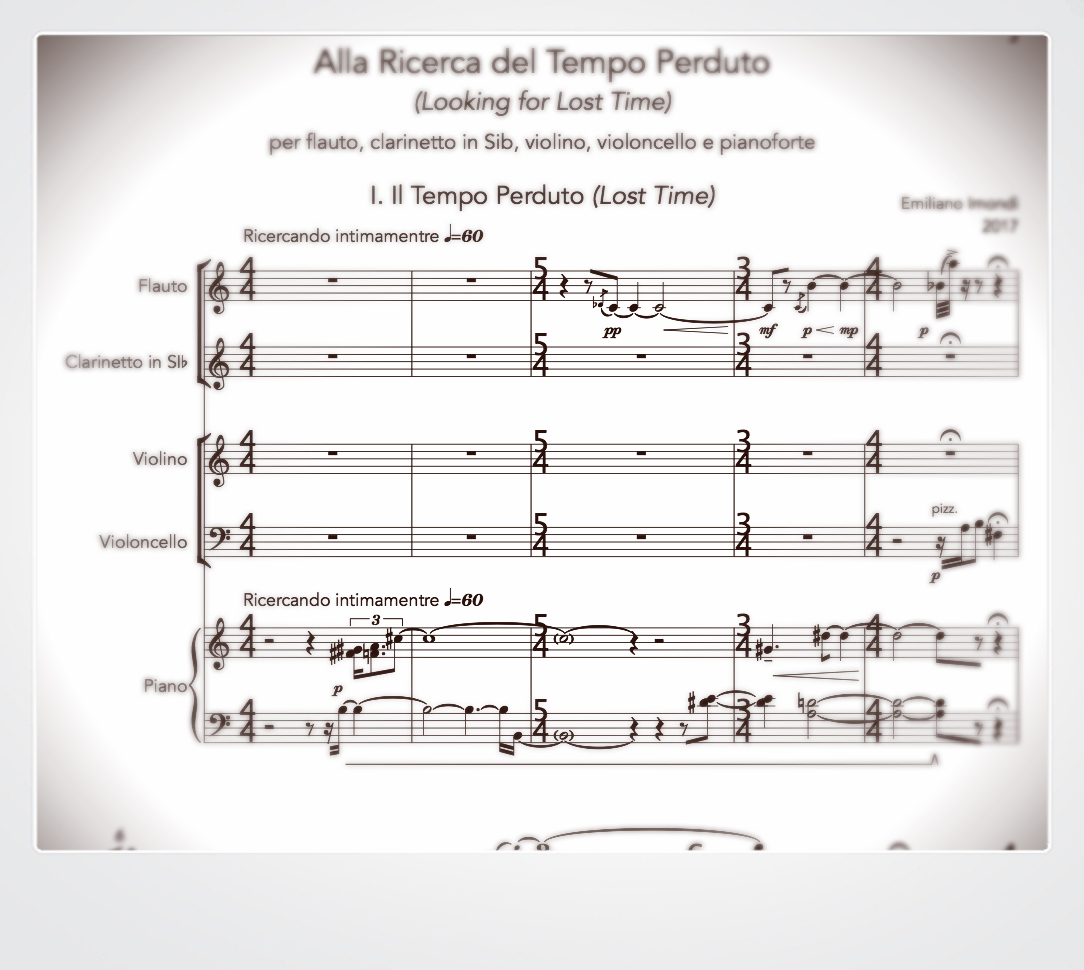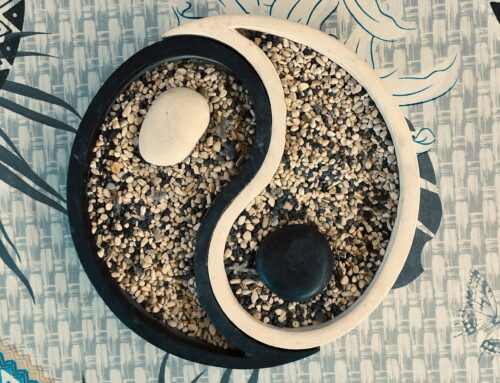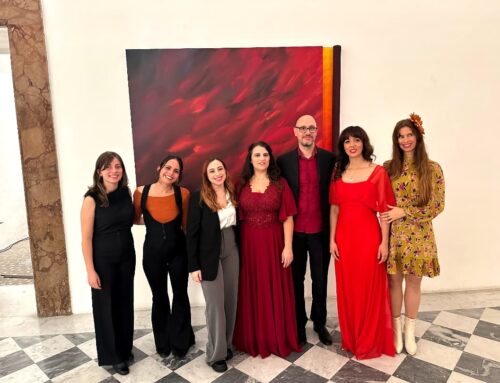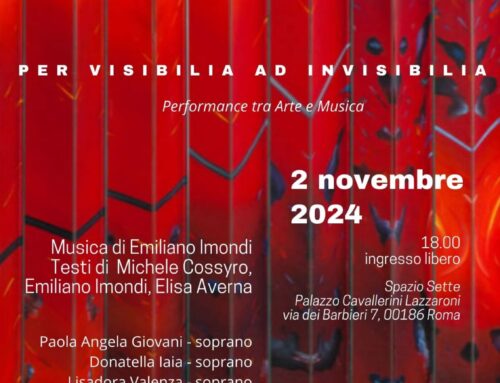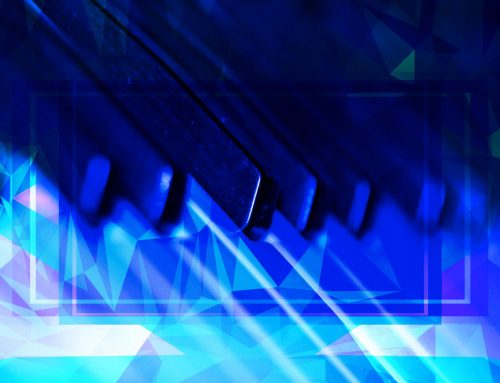In Search of Lost Time: new composition inspired by the Proust’s main work
In Search of Lost Time (orig. À la recherche du temps perdu), is certainly the most important work of Marcel Proust and this is why I chose it as a source of inspiration for my last and homonymous composition written for quintet: flute, Bb clarinet, violin, cello and piano.
The aesthetic direction
The piece refers to some proustian concepts such as the Voluntary Memory and the Spontaneous Memory as processes to relive the past experiences (the memories) on an emotional level. Especially thanks to the Spontaneous Memory you can find the Lost Time (experiences lived in the past) in a single impression related to the feelings experienced. Then the artist, if properly linked to himself, is able to fix it in his art making the subjective time eternal. The search for Lost Time through the technique of the Spontaneous Memory is seen as a tendency towards the Eternal, Eternal which is then fixed by the artist through his Art. Memory and spontaneity are the central elements for the development of the composition. The musical gestures are distributed within the work as to favor in the listener a spontaneous mnemonic process in which the auditory memory of what he previously heard accompanies him throughout the course of the piece, gradually clarifying its formal development and guiding it towards the research of his own Inner Time.
In Search of Lost Time: the structure of the piece
The piece follows the evolution of these concepts, carrying out its form in 4 short moments called precisely:
I. Lost Time
II. Spontaneous Memory
III. Voluntary Memory
IV. Recovered Time
Each section is freely based on my personal inner experience and how it is related in some way to these concepts.
Compositional development
If I want to describe them in some way, I can say that the first and second parts of the In Search of Lost Time are born from an unconscious improvisation at the piano only moved by the desire to compose spontaneously and guided by an attitude of acceptance and non-judgment about what I was playing. To do this it was essential to achieve a meditative state that would allow the maximum expression without exerting any decision on sound and musical material that was created extemporaneously. Recording the improvisation then allowed me to work on music trying to give an expressive form to what had come out so that, after a long layered process, the first two sections have been outlined:
- a musical moment with a sense of research in which the sound elements and musical gestures follow each other without interruption,
- a more structured theme pervaded by a trend still quite uncertain.
Finally …
While waiting to find a premiere for the piece I would like to close this post by listening to a beautiful composition – we can call it a masterpiece – for string quartet by French composer Henri Duttilleux: Ainsi la Nuit (1976). In this piece the composer somehow inspires to Proust’s concepts as he himself states:
There’s a tendency—it’s almost entirely intuitive—not to present the theme in its definitive state at the beginning. [T]here are small cells which develop bit by bit. …This may perhaps show the influence of literature, of Proust and his notions about memory.
Henri Dutilleux
Thanks to everyone and good listening
P.S. For more infos on the compositions in progress follow the link to the previous post and enjoy reading.

